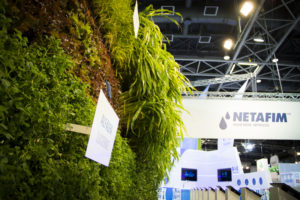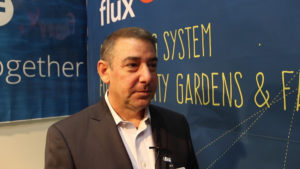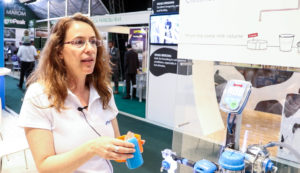Start-Up Nation: Silicon Wadi
Israel’s penchant for high-tech startups and innovation is no mirage.
By Richard Banks | Photos By Jamie Cole
SEE THE WHOLE PACKAGE: How Israel overcame its national water shortage and averted an existential crisis. If they can do it, can we? >>
By now, the moniker “Start-Up Nation” is considered a cliché in some circles. It was the title of a 2009 best-seller that detailed the phenomenal rise of Israeli entrepreneurialism. It’s authors, brothers-in-law Dan Senor and Saul Singer, ran the tables on the talk-show circuit and the book became all the rage in the investor press. Another measure of its success, the book and its authors even suffered something of a backlash, with critics claiming this “Story of Israel’s Economic Miracle” (the book’s subtitle) was little more than a larger public relations play to shift attention from Israel’scontinued conflict with Palestinians.
Yet the claims central to the book—for example, that a country of just 7 million-plus people has the economic wherewithal to list more companies on the NASDAQ than any but the U.S.—ring true even today, some six years after the book published.
According to 2014 numbers, Israel leads the 34 member countries of the OECD—the Organization for Economic Development, which includes nations such as the U.S., Canada, Germany and Australia—in R&D spending at 4.3% of GDP. Raising over $10 billion from 1993 to 2010, Israel was second only to the U.S. in total amount of capital raised and lead the world on a per-capita basis. It’s a trend that appears to be continuing, as numbers from 2013 show it raising six times more per capita than even current economic powerhouse poster-child Germany.
It’s a remarkable performance that shows little sign of letting up. Israel is home to the world’s largest generic drug manufacturer, Teva, which just recently made a $40.5 billion purchase of a rival. The country is also often called the “Silcon Wadi” (wadi is Arabic for Valley) for its computer wizardry, which has led to a number of innovations, such as instant messaging technology and the invention (although disputed by other countries) of the thumb drive. Virtually every major high-tech company—Apple, Google, Microsoft and Intel, for example—have substantial operations in the country.
Agriculture, too, has benefited greatly from Israeli innovation. At the state-funded Israeli Volcani Center, new varietals of fruits and vegetables that produce better in hot, dry conditions have been and still are being developed, as are new ways of irrigation, fertilization and fighting plant-killing pathogens. The country’s farmers and researchers are pioneers in growing crops in greenhouses, as well as fish in aquaculture facilities.
Perhaps the best known innovator in Israel’s ag sector is Netafim, the drip irrigation pioneer. Started in 1965 in a kibbutz in the Israeli Negev desert, the company now claims to be the world’s largest irrigation company, with operations worldwide, including the U.S.
Starting with an idea born from a leaky irrigation pipe and the tree that benefited from the water delivered slowly in low volume, Netafim now offers a range of products that irrigate all manner of crops, including orchards, vineyards and fields. The company also helped pioneer “fertigation,” the delivery of fertilizer through drip lines and, as is NaanDan Jain, another company with Israeli roots, is developing low-pressure irrigation systems for areas where water pressure and/or electrical infrastructure prevent using high-pressure systems.
To learn more about the Israeli penchant for innovation, FarmLife staff visited AgriTech Israel this past spring. An annual showcase for Israeli innovation in agriculture, the event spotlighted scores of companies, new and established, that offer a variety of solutions for producers worldwide. Harvesting, dairy, irrigation, fertilization, sensor and a number of other technologies were on display.
Below, we offer descriptions of a few of the companies—and their products—we encountered.
Netafim
Marking its 50th year of business in 2015, Netafim claims to be the world’s number one provider of drip irrigation solutions. It is also one of the largest irrigation companies, more generally speaking, with operations in more than 110 countries. Netafim offers a comprehensive line of drip/micro irrigation products for agriculture, greenhouse, nursery, landscape and turf, as well as other applications.

Celebrating “50 Years of Shaping the Future with Smart Irrigation Solutions,” Netafim, at this year’s AgriTech Israel conference, displayed a wall of field-crops irrigated by the company’s drip solutions.
“If I want to sum up what is Netafim,” says Yoav Zeif, Netafim’s head of the Americas, product offering and marketing, “Netafim is the pioneer of the new industry which is smart, efficient irrigation based on drip.
“The history of drip is that it started with orchards and vegetables, fruit and vegetables, what we call cash crops where … the return per acre is very high. So [Netafim] became, in the last 50 years, the standard in cash crop.
“This is our homebase, the cash crops, but the next step is really taking drip to new horizons.” One of which says Zeif, is “taking this amazing technology and really impacting the corn area, the sugar cane in Brazil or in Central America, the cotton in Arizona and in California. The impact in terms of yield, and cost savings and water savings, of course, is huge.
“Challenge number one is about making sure that you have a system that is simple enough for the broad acreage … you need to go in the field and to cultivate, and you need to match the methodologies or the practices, the non-tillage practices, everything with irrigation.
“The second big challenge is about cost efficiency. So, we are talking about a system that, although it has very short ROI period—in some cases you return the investment in one year or two years—but in the mindset of the farmer that is flooding his field for the last 100 years is very hard to change. It doesn’t cost him much money to do so, so we want to prove to him that the ROI [of drip] is real and that adding a drip system in his field will improve his bottom line.”
For more information, see netafimusa.com.
NaanDan Jain
Like Netafim, NaanDan Jain also has roots in Israel and is one of the largest irrigation companies worldwide. The company, formed on two separate kibbutzim in northern Israel, has since been purchased by an Indian firm, giving the combined company a more global reach.
“As a company, we have the biggest, [most] diverse number of products,” says Avinoam Levanon, senior vice-president, sales and marketing with NaanDan Jain. “Usually, companies either sell just sprinklers … or are companies more concentrated in drip systems.” NaanDan Jain, however, offers a comprehensive catalog of products.
One of the company’s latest developments is a new drip tape in its Cascade line, which is marketed for row crops. Called J-Turbo Slim, it’s one of the thinnest tapes on the market, with walls only 7 mm thick.
According to NaanDan Jain’s Narinder Gupta, the company’s U.S.-based chief operating officer for Jain Irrigation Inc., the new slimmer product is easier to use and transport than the 10 mm tape, and, he says, “it’s a lower thickness product, but the life will be same. The performance will be better because of the strength of the product.”
That allows the company, says Levanon to “give the farmer, we think, the best solution that suits him. And the best solutions are usually not for one year or two years, but for many years, 10, 15 years. But, of course, it depends also on the economic situation of the customer. If he cannot pay—he can pay only for something very, very low, low cost—we can build a [less] sophisticated system. So, we have to fit it to the countries. And that’s how we operate, worldwide.
For more information, see naandanjain.com.
Galcon
Galcon manufactures smart monitoring and control irrigation solutions for homeowners, professionals and commercial farmers. Headquartered in and owned by Kibbutz Kfar Blum, the company offers a wide-range of products, from single standalone battery operated controllers to multi-station, wireless, web-based irrigation and “fertigation” systems.
Designed to increase yield by optimal irrigation, while conserving valuable water resources and reducing energy consumption, Galcon’s smart irrigation solutions are certified by the USA Environmental Protection Agency as “Water Sense” approved products.
Says Roy Levinson, the CEO of Galcon USA: “We’ve been in the business of manufacturing irrigation controllers since the early 1980s, predominately in the battery-operated world, as well as in connected devices. We just recently launched a line of products, called Galcon Smart, which brings us into the connected world of Internet of things.
“Water has been at ultimate shortages, and population growth is outstripping the available supply of water. That volume of water is never going to change, but what is changing is population. By 2050, we’re going have 10 billion people in the world. So, we have to make sure we manage this resource very carefully and very effectively.
“Our product family runs from the small, urban gardener, or urban farmer, with hose-end products that you can connect to your Bluetooth device, to web-based controllers that operate small farms, to cloud-based controllers that operate large farming operations. We’re able to manage anywhere from as little as 25 square feet to a site as big as hundreds and thousands of acres.
For more information, see galconc.com.
Flux
Flux has developed new technologies and methods for hydroponics. Its system combines an innovative sensor that continuously monitors and adjusts plants’ growing conditions, an image-processing capability that helps determine plants’ nutritional needs, and a means of crowd-sourcing for grower support throughout the entire growing process.
Partners and advisers come from the Food and Agriculture Organization of the United Nations and Israel’s famed Volcani Institute, as well as private-sector researchers and investors. Developed for both home and semi-professional usage, the Flux system is, according to company officials, well-suited for growing greens, vining plants, root crops, fruits and herbs in dense urban locations, or even in regions suffering from drought, such as California and the Middle East.
“We see the trend of organic, of people wanting to be self-sufficient,” says Tal Catran, Flux’s chairman. “’I want to grow at home. I want to know exactly what is added to my vegetables. I don’t want to see chemicals I don’t know. I don’t know how they treat it.’
“We hear this in the Far East. In Japan, for instance, there’s a big fear of the soil itself. What is inside the soil? Well, you look down and you’ll see soil, but you don’t know what’s inside.
“So, we see that people, first of all, have the need or the wish to grow by themselves at home, control it. [That’s] made them start looking into home-growing. But, again, they encountered the problem of technology. This is what is the inspiration.
“You take the Flux [sensor] inside the water and then start testing … the current status of the water. Then it will tell me back, ‘Listen, this is what is missing, and add this amount.’ [The sensor] tests the minerals, but it also can test temperature and light.
“Up until now, you would have to add [nutrients], manually. With the [Flux system], well, the information goes to a machine that has cartridges, like a printer. But instead of ink, we have minerals. [Flux] tells it what to dispose, how much, automatically. You don’t do anything. And it will then call your supplier once the cartridge is about to end, to finish, and it will order by itself.
“It’s very easy to use, very friendly, and we have something that no one has, and that’s the social ecosystem around it,” which says Catran, is a critical ingredient in helping growers produce successfully.
For more information, see fluxiot.com.
AgroWebLab
Started in 2012, AgroWebLab has developed an online platform, using smartphone apps, for collecting farm sensor data.
Says Leon Slavkin, AgroWebLab cofounder, “Our system collects and monitors the data. It displays it if the users are interested, but the priority is that it analyzes the data and it sends useful instructions to the farmer straight to their phone, so that they can make changes when they see fit.
“A large application of this type of approach,” continues Slavkin, a spacecraft systems engineer from Denver, Colo., who has also worked with NASA, “is for water conservation, to detect stress, to identify situations where additional water would help for irrigation, and also to monitor if everything’s okay. And we do an adaptive irrigation approach, where we can lower the water quantity if needed.
“We do the data analysis part. We don’t necessarily build the sensors, but we integrate with all of them, and we’ve recently partnered with an irrigation control company. Their controller connects through the cell phone signal as well, so all of our recommendations can go straight through the controller. So, it’s a sensor-based, smart-adaptive irrigation control philosophy.
For more information, see agroweblab.com.
AfiMilk
Having developed the first electronic milk meter more than 30 years ago, Afimilk continues to offer tools for dairy analysis and management. Noa Yonish, the company’s marketing communication manager, details one of the company’s latest products.
“It’s something very unique. We have this device, which is called AfiLab. Now, what AfiLab does is measure inline, real-time milk components. It measures fat, protein, lactose and blood in the milk.
“But the newest innovation we have is with the AfiLab. With it we can separate the milk during milking to two different tanks, according to its coagulation properties. So, we have one tank with milk with higher coagulation properties and then one tank with lower coagulation properties.
“Now, the milk with the higher coagulation properties, the dairy plants can get between 8 to 15% more cheese, [using the] same amount of milk. And we separate it, not just for each cow but for each 200cc of milk we can separate.
“So, let’s say, in the beginning of—when you start milking the cow—you have higher coagulation properties. Then, it goes lower … and you can separate to a different tank. And this is done in real time.
“This is something very new. We just finished a trial here in Israel. It was beta, and it worked so well. So, now, we’ll sell it with the milk plant here in Israel. And we’re now starting to sell it, also, in Europe.” At the time of our interview last spring, Yonish said plans for sale of AfiLab in North America were not yet finalized.
AfiMilk, which has a U.S. subsidiary, is headquartered in Kibbutz Afikim, near the Sea of Galilee.
For more nformation, see afimilk.com.
SCR
SCR, a dairy hardware and software innovator, sports this motto: “Make every cow count.”
“That’s our goal and that of a dairy,” says Guy Itzkovitch, SCR’s sales director, who goes on to offer info about some of the company’s more recent offerings.
“On the cow intelligence side, we have a very unique technology that sits on the cow’s neck and basically records two major things. One would be the activity of the head of the cow, and the activity of the cow. We basically can see exactly what it does, in what intensity and what direction. And we can analyze and filter it.
“The second thing that we do [via the collar], we have a microphone in the tag that records how many minutes a day the cow will ruminate. And this is the best early indicator for the cow’s well being.”
The data from the collar sensors can then be analyzed by another offering from SCR, herd management software, called Data Flow II. “We can generate a report that gives you exactly how many cows, which cows, are not feeling well, and on the other side, which cows need to be inseminated. It shows the farmer a day to two before the cow even feels that she’s sick, the fact that she is sick or that she’s developing sickness. And now the farmer can pull her out and treat her.”
Itzkovitch says the company has three veterinarians on staff who have “developed an algorithm that translates the data into an actionable report. A lot of our competitors, what they will tend to do, is collect a lot of information and give you a lot of information. In today’s dairy farm, there’s no time for it. The time is very limited, and the time needs to be used in the best way to manage the farm. And good management is based on good reports.”
Those reports offer specific treatments for each cow, which, in turn, says Itzkovitch, make for “a healthier herd. The healthier herd will give the farmer more milk.”
For more information, see scrdairy.com.
Etgar
In this era of high-tech, precision agriculture, it can be a surprise when we’re reminded that not all field crops have complete automated solutions. For example, consider peppers, both sweet and spicy.
Etgar, an Israel-based agriculture and mechanical solutions company has developed a harvester for many types of field-raised peppers. “Harvesting is a great challenge for [pepper] growers,” says Ofir Dubovi, a partner in the four-year-old company, “because, today, approximately 50% of the overall cost of the harvesting goes to workers harvesting manually.”
The company’s two new harvesters—one a pull-type, the other a harvester head—can, says Dubovi, “harvest more than 1 ton per minute. So, in one day we can actually harvest approximately 4 to 5 acres. You need more than 100 humans to do that.”
In addition to the pepper harvesters, the company has also developed a forklift that delivers containers specially made for harvesting broccoli, a small corn head that folds for transporting and a tomato harvester. A self-propelled pepper harvester is currently under development.
For more information, see eladetgar.com.
SEE THE WHOLE PACKAGE: How Israel overcame its national water shortage and averted an existential crisis. If they can do it, can we? >>








